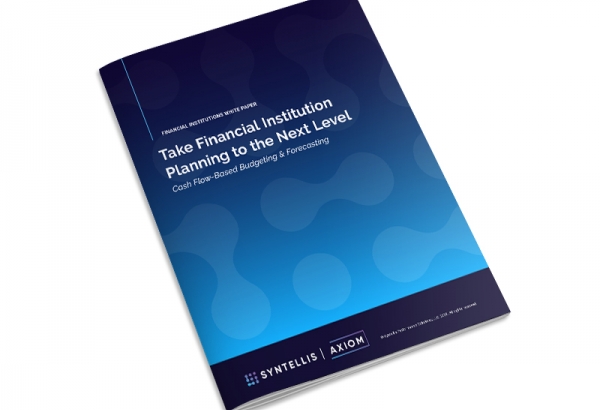As financial institutions faced an unprecedented crisis at the onset of COVID-19 pandemic, organizational agility quickly proved critical. Companies were forced to deviate from plans and adapt quickly, making the pandemic a proof point that planning can only take you so far. One of the main lessons from the pandemic is that planning and agility actually go hand in hand.
Nearly two years into the pandemic, having faced resulting economic impacts such as inflation and labor challenges, financial institutions must continue to place a greater focus on agility. It may appear counterintuitive; making changes on the fly seems in polar opposition to setting a planned path forward. Yet the relationship between planning capabilities and quickly enacting change in the face of uncertainty is closer than many would imagine.
The continued impacts of COVID-19 on financial institutions
Most organizations start out every year with a plan for how things should go. But the pandemic serves as a major case study in the inherent challenge of unforeseeable economic curveballs. In fact, our 2022 CFO Outlook for Financial Institutions report found that COVID-19 was the biggest driver of business model change.
The past year has proven we will continue to experience COVID-19's economic impacts for the foreseeable future. This unpredictability may drive organizations around the world to throw aside their meticulously crafted plans; however, planning ahead in these times will ensure financial institutions’ ability to remain agile. The crux of this claim resides in understanding what good financial planning really means.
Explore new solutions to planning
While annual plans and goals have their merits, operating on shorter cycles has become imperative to organizational success. When a crisis hits, organizations that are agile and able to adjust budgets quickly and accurately find the best path to peak performance.
However, a mere 29% of finance leaders said their institution had a clear understanding of its profitability analytics and reporting. Without building analysis capabilities, companies will be traveling in the dark and unable to plan against goals or adjust for unforeseen events. Financial institutions are also struggling to proactively address known gaps in their capabilities — 59% of respondents acknowledge that their data visualizations and dashboards are insufficient, limiting visibility and making timely business decisions more difficult.
For many, financial planning technology has fallen into a blind spot which severely limits professionals’ abilities to make quick changes and strategic plans. In other words: their lack of planning capabilities hinders their agility.
Inefficiencies inhibit agile financial planning
It’s obvious to see why inefficiency persists when we look at the current state of financial planning within organizations. Although most respondents (84%) agreed that their institution could do more to leverage financial and operational data to inform strategic decisions, many continue to use outdated tools and processes.
Over a third of respondents said they still rely on spreadsheets as the primary means for budgeting, forecasting, reporting, and scenario analysis. This means when facing a crisis like COVID-19 — and the pressure to completely alter existing expectations of cash-flow and profitability — a large number of organizations have to manually assess and update countless spreadsheets before charting a reliable course forward. This is the opposite of agility.
For many organizations, identifying the problems or technology limitations that are holding them back is the first step to solving them. There is a lot of ground to cover when it comes to modernizing organizational attitudes and approaches towards financial planning, but acknowledging where these gaps exist is key to overcoming them and achieving more efficient planning.
So what does efficient planning look like?
The future looks optimistic — 92% of institutions expect to meet or exceed their 2021 profitability goals. In order to continue on this upward trajectory, leaders must embrace advanced technology. Manual processes are no longer sufficient; automated tools that can quickly compile and parse data drastically increase financial planning speed and agility. Second, financial plans need to incorporate scenario analysis technologies so that contingencies can be rapidly created and implemented as needed. Institutions must also provide their teams with the tools for accurate profitability analysis across branches, products, officers, relationships, and more, to enable and sustain profitable growth.
These relatively simple steps can go a long way in helping organizations achieve true agility and enable them to quickly adapt finances to meet whatever realities they face. COVID-19 accelerated years’ worth of digital transformation virtually overnight. Even as our society begins to move on from its effects, the need for agility will still remain.
You also might be interested in...

Better Budgeting and Strategic Planning: Evolving Performance Management

Take Financial Institution Planning to the Next Level


